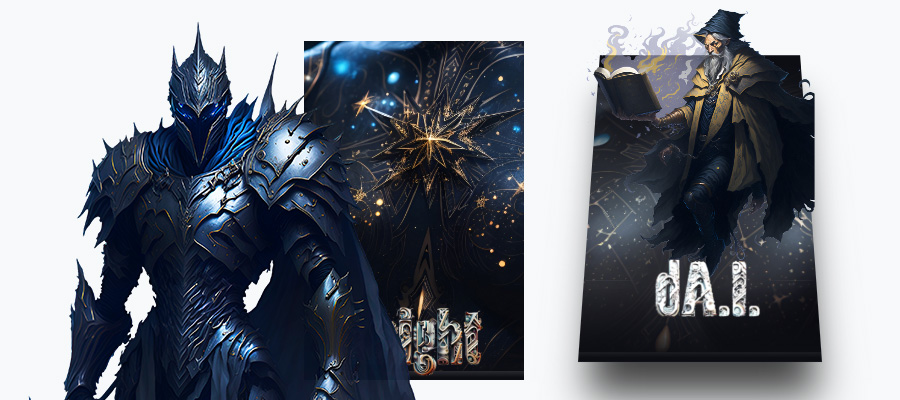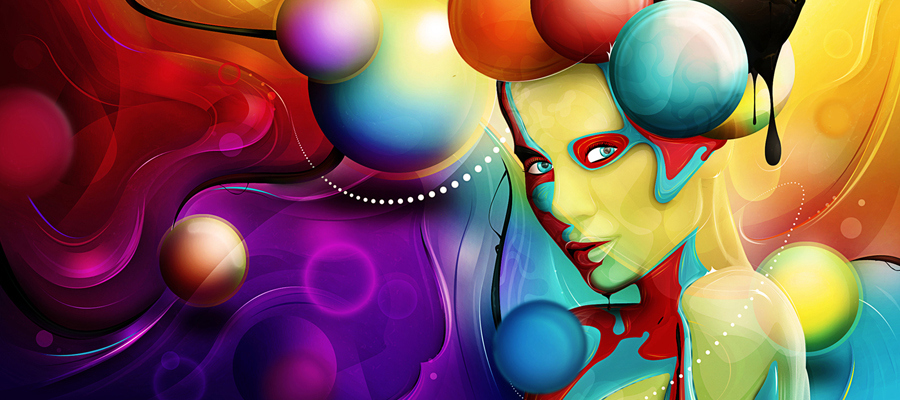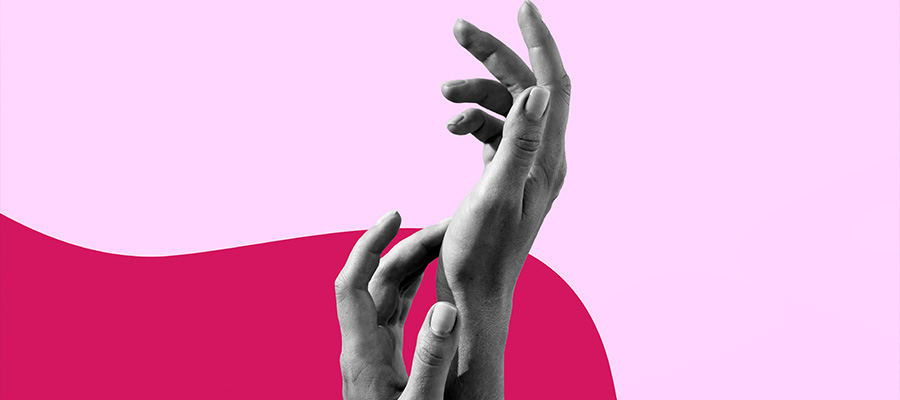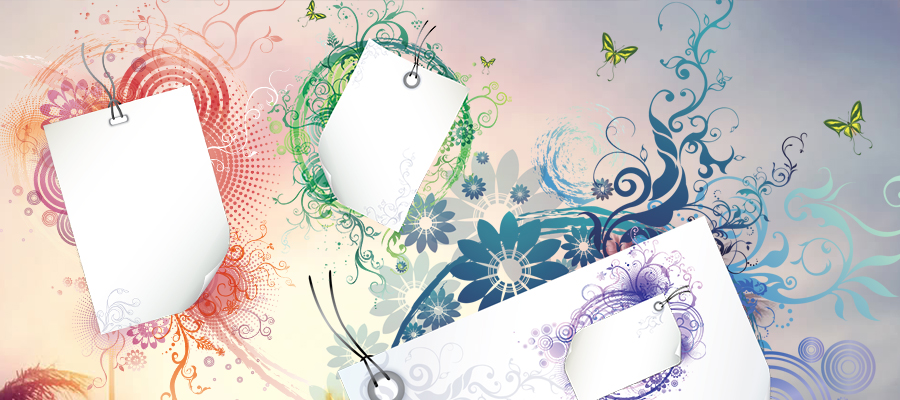In this Photoshop tutorial, we’re going to see how to create extremely glossy and sexy text effect with glitter texture. We will use simple techniques blending and layer style effects. Today, we will demonstrate how to sketch a drawing, refine it in Illustrator, and then bring it into Photoshop to create a truly brilliant glossy typographic illustration. When used together, Photoshop and Illustrator are a powerful combination. They can be combined to create just about any type of illustration.
The image below is what we’re going to achieve at the end of this tutorial. It is up to your imagination to incorporate it in your own fantasy world and create a story around it. Let’s get started!
Tutorial Details
- Program: Photoshop, Illustrator
- Difficulty: Advanced
- Estimated Completion Time: 3h +
FINAL IMAGE PREVIEW

RESOURCES USED
The following resources were used during the production of this tutorial.
STEP 1
The first step is obviously, to create your type. To do this you can use the file type-sketch.jpg (provided in the download files) or, if you prefer, work from your own sketch. Take some paper and roughly draw some type, for example the word vicious. You don’t need too much accuracy at this stage (as you can see from my sketch), focus above all on creating nice, smooth, rounded, and dripping letters. Once done, open Illustrator and create a new A3 landscape document. Select File > Place and open the file type-sketch.tiff or your own sketch. In the Layer palette, double click the layer, name it Guide and lock this Layer. As you can see, there aren’t any lips in my sketch, don’t worry you’ll add them later.

STEP 2
Now, create another layer above the guide layer and call it type. Select the Pen Tool (P) and with a 1pt stroke and a bright color start tracing the outline of the letters. Don’t feel limited by the sketch. Feel free to make changes on the fly to improve the outline of the letters. Don’t use too many anchor points, the fewer, the better. Remember to toggle the Guide layer on and off to see how are you doing.

STEP 3
Continue tracing the outlines. If you have one, I really suggest that you to use a graphic tablet for this. When you don’t like a particular point, grab the Direct Selection Tool (A) and gently move the handles of that point until you are satisfied. Feel free to add any other details that you may want on your type. Experiment and exaggerate your curves or add other drips if you feel it necessary.

STEP 4
Once finished with the outline double click the Colour Picker, and use the values below to create the fill of the type, then hit Cmd/Ctrl + A to select all and go to Object > Expand, leave flagged fill and stroke and click ok. You should end up with something like this.

STEP 5
Now it’s time to add some depth to our type and create some basic highlights that you’ll improve on later in Photoshop. Select the type by clicking it with the Selection Tool (V) and hit Cmd/Ctrl + G to group the object and double-click it to enter the group. Now grab the Pen Tool (P) again, select a with an 8 pt stroke without fill from the upper left corner, and begin to draw the highlight approximately in the middle of the V like in the image below. Open the stroke panel from the right and click the Round Cap option to make the extremity of your stroke rounded.

STEP 6
Now expand the stroke we just created as explained in step 4, in this way you can edit all the anchor points and easily modify the shape we just created. With the Direct Selection Tool (A) select the point you want to edit and carefully begin to enlarge some parts of the shape in proximity of were you think the highlights will be more visible and thicker. This stage is more a matter of experimentation. You need to imagine, in some way, how the highlight will look better and place it in that way.

STEP 7
With the shape selected, go to Effect > Blur > Gaussian Blur and set it to about 30 or 40 pixels and reduce the opacity to 58%. You can always modify these values from the appearance panel. Now it’s important that that these effects remain scalable, so go to Illustrator > Preferences > General and tick the box Scale Strokes and Effect. In this way you are sure that the effect will always scale proportionally to the object.

STEP 8
Now, is better to mask the group so that all the highlights and the shades you are going to create can’t go outside the borders of the type. Select the type and hit Cmd/Ctrl + C > Cmd/Ctrl + F to paste in front, then with the copy selected, go to Object > Arrange > Bring to Front. Now select both the copy and the first type shape and select Object > Clipping Mask > Make. In this way you can create subtle darker shading on the edges of the type. To do this, again Cmd/Ctrl + C > Cmd/Ctrl + F but leave only a 4 – 7pt stroke and no fill from this shape and give it this color C:10 M:100 Y:50 K:0. Once done, apply to it a Gaussian Blur with a 9px radius like you did in the previous step.

STEP 9
Now, with the same technique you used in step 6 and 7, you need to create all the other highlights. Experiment with the Gaussian Blur and remember to vary the line weights. There are no rules here, just place these highlights in a nice way. Keep experimenting and have fun! Don’t feel limited by my image, feel free to place more or less highlights and in different positions, if you think that could look better. Once done you should have something like this.

STEP 10
With the type done for now, the next step is to create the mouths, like you did for the type, you can either use the sketches provided in the download or draw a rapid sketch by yourself. In any case, now you have to trace these mouths in Illustrator using the sketch as a guide as you did for the type. So, create another layer at the bottom of the Layer stack, and call it Mouth1guide, for example. With this layer selected, hit File > Place and open mouth1sketch.jpg or your own sketch, then lock this Layer. Create another layer above this and call it mouth1.

STEP 11
With the layer mouth1 selected, toggle of the visibility of the type layer and trace all the edges of the mouth sketch with the Pen Tool (P) like you did for the type. Close the path, remove the stroke and fill it with a deep red for example C:15 M:100 Y:90 K:10. Remember that your sketch is only a guide, don’t hesitate to improve it where you think it is necessary. Once done, toggle of the visibility of this last shape too, begin to draw the internal part of the lips edges until closing this path too, knock out the stroke and give it a 70% Magenta.

STEP 12
You have now to create a compound path and subtract the magenta shape from the red one to create the lips. So drag the magenta shape below the red, drag it to the Create New Layer thumbnail at the bottom of the Layer Palette, then select both the shapes (not the last copy) go to the Pathfinder Palette to the right and click the button Minus Back (the last on the bottom right). In this way you basically create a “hole” in the center of the mouth. It’s important because then you’ll create a shape layer for the lips like you did in step 8 for the type.

STEP 13
It’s time to draw the teeth. Once done, simply place them just behind the lips shape (the red one) and before the gums (magenta shape) using a white fill with no stroke. Once finished apply a gradient to the gums shape. To do it, with the gums layer selected, open the gradient tab on the right and use the below values by double-clicking the swatches along the gradient slider. To create a new value, click just below the slider. To copy an existing one just Alt-click and drag it.

STEP 14
It’s time to add a bit of depth to the mouth as well. Now that you’re used to the Gaussian Blur Effect we’re going to use a lot of this technique. Almost all the shading will be done with it, until we work in Photoshop. So begin to select the red lips shape created before, hit Cmd/Ctrl + G to group it then double-click it to enter the group. Cmd/Ctrl + C > Cmd/Ctrl + F to copy it and paste in place on top of it. Delete the fill from this copy and (from the Appearance Panel) apply a 10px stroke of the same colour with a 22px of Gaussian Blur and the opacity at 100% Multiply. Double it up but reduce it by 2px and reduce the opacity at 75%. You have the shading around the edges, but you need to create a mask like you did in step 8, if not the shading that you’ll apply will exceed the edges of the mouth.

STEP 15
Let’s go create the mask. Select the red lips shape Cmd/Ctrl + C > Cmd/Ctrl + F then bring the copy to the front, select both shapes and hit Object > Clipping Mask > Make then leave the shading between these two shapes. Once done you can begin to create some highlights because, as you know, every shading that we are going to apply will stay within the edges of the mouth. Let’s create a couple of them. Create a 9px white stroke on the lower lip (like below) then apply a 21px Gaussian Blur, reduce the opacity at 94% and set the blending mode to Overlay. Remember that the key is to experiment with Opacity and Blending Mode to obtain nice shading. Now create a slightly darker shading near the teeth with an other 10px stroke C:33 M:100 Y:100 K:54 colour 20px Gaussian Blur and Opacity 69% Multiply.

STEP 16
Continue this way for all the shading you want to create for the mouth, remember that as you did in step 6, you can turn the strokes into fills by creating outline strokes, when you need more control over their shapes. As I said for the type part of the shading, is up to you the quantity and strength of the shading but don’t over do it, because you are going to “exaggerate” them later on Photoshop. Once finished, you should have something like this below. For more luminosity, I have duplicated the lips (only the lips) on top of it with a Gaussian Blur of 9px 100% opacity and Blending Mode Screen. But it’s up to you.

STEP 17
It’s time to create the other mouth, if you prefer you can work in a separate file or use the same, is not important since we will export the elements one by one later in Photoshop to arrange the composition in the right way. So create a new layer, go to File > Place and open mouth2sketch.jpg. Call this layer mouth2guide for example and lock it. Create another layer on top of and begin to trace the sketch, repeating the techniques learned so far from step 11 to 16. Remember to draw three different paths, one for the lips, one for the internal part of the mouth and one for the teeth. And above all remember to mask the shape in which you want to put shading. Below you can see how it is structured my Layer Stack about this part of the tutorial.

STEP 18
Ok, it’s now Photoshop time! Now let’s start the really fun part because we are really going to give life to the artwork we have drawn so far with a lot of lights, shades and texturing until we’re left with a really rich ,deep, glossy image. You should have something like this below so far. The very last thing to add in Illustrator is the liquid shape below. As you can see it is really easy and intuitive closed path with some curves. Loosely trace this shape, give it the same color of the type and you have done with Illustrator!

STEP 19
Into Photoshop, create a new A3 landscape document, create a new Layer and apply a gradient overlay by double clicking the layer. Then, apply the values below.

STEP 20
The next step is to begin to work hard on the type. So select all the type in Illustrator and copy it into Photoshop as a smart object. Scale and place it as shown. Call this layer base type. Create a new layer above this and hit Cmd/Ctrl + G to create a group. Call this group shadows1, grab a soft brush between 200 – 250px, opacity around 20% enable the airbrush and set the foreground color to black. Now, without leaving the new layer create a selection by hitting Cmd/Ctrl + Click on the Smart Object thumbnail in the type layer and with the selection active, begin to softly paint on the edges of the type. Continue this way, but don’t use the same layer for all the shading and experiment by slightly varying opacity.

STEP 21
Using the same technique, work up a series of lights. Begin by creating a new layer just above the shadow folder, then Cmd/Ctrl + G to create a group. Set the foreground color to white and with the same soft brush used for the shadow, begin to paint the lights with about 40 to 50% opacity. Use the lights from Illustrator as a guide. If you are using a tablet try to get used to creating thin to thick strokes applying a gradual increasing of pressure. Sometimes you can double up a layer to reinforce a highlight, then select both the layers and hit Cmd/Ctrl + E to merge them. I applied some strokes with a blending mode set to Soft Light, but feel free to experiment. When done create another folder called stars, set it to Color Dodge and place the lights group inside it.

STEP 22
Now create a selection from the type layer as you did in step 20, then target the Stars folder with the selection still active, click the Add Vector Mask button at the bottom of the Layer Palette. In this way the texture that you’ll insert in this group will not exed the type. Now open the stars image provided in the download folder, hit Cmd/Ctrl + L to open the Levels and insert the below values. Then Image > Adjustement > Selective Colour and again insert the values in the screenshot.

STEP 23
What you need from that image is only the part with the stars, not the part with the nebulae, that’s why we used the mask so you can move, resize, rotate and do whatever you want with this, but the part of the photo that goes outside of the edges of the type will not be visible. Then, with the layer selected into the stars folder drag with the Selection Tool(V) the image inside it and thanks to the Color Dodge blend mode applied before you should see a sort of glitter. Arrange the image in a nice way, when satisfied, select the type layer double-click it to open the Layer Style window and set all like in the image.

STEP 24
Create another folder just above the stars layer, name it Lights 2 here you’ll begin to create some glossy and shiny highlights made by Shape Layers made with the Pen Tool (P) and the Ellipse Tool (U) mainly. Alternate these two tools to trace smooth rounded shapes where you want your type shining. Remember to use different layers and use different degrees of opacity. For example on the V use the Pen (P) to create the long shape on the left, then reduce the opacity to 64% and finally apply a Gaussian Blur (Filter > Blur > Gaussian Blur) with the amount between 18 to 20 px. Randomly create little circles too, alternating various opacities and blurs on them. Experiment and have fun! It’s always the better way to create good pieces. Refer, if you want, to my image below.

STEP 25
If you want to give some organization to the layers you can group all the shading for the type. Now that you know this shading technique, it’s time put your hands on the first mouth. As I said the techniques are the same and the sequence too. So you only have to go back to the Illustrator file, select mouth1 and paste it as a smart object in a new layer above the new type shading group, scale and arrange it properly, and repeat all the shading and texturing (use the same photo) for the type. Once done you should have something like this.

STEP 26
Remember the bottom liquid shape done in step 18? Well, it’s time to import it into Photoshop as a smart object in a layer below all the others. Scale it to fit the composition and apply a Gradient Overlay from black to a deep red using the settings below. To create a sense of movement, draw a sort of undulating path with the Pen Tool (P), then create a selection from it and in a new layer with a soft white Brush (B) and low opacity, draw softly from the outside of the selection. Then draw some other lights and shadows with the techniques learned so far. To create the little bubble, with the Ellipse Tool (U) set on Shape Layer simply draw white or red little shapes and use the below Layer Style setting.


STEP 27
Now place the other mouth below this last layer importing it again as a Smart Object. Arrange it in the composition scaling it properly if necessary then apply a subtle Gradient Overlay using the below setting. Rapidly add depth to the mouth choosing from the techniques you learned that you are more comfortable with, I’ve done the highlights on the upper lip with a selection and using a white soft brush. Meanwhile you can create, on the very top Layer, a Gradient Map going to Layer > New Adjustment Layer > Gradient Map and use the below values. Set this layer‘s blending mode to Overlay and leave it on top of all the others.

STEP 28
As we can see the image is really beginning to have “strength,” it only needs a little more detail. For example another series of shiny lights here and there. So create another group just below the gradient map and repeat the technique outlines in step 24 but this time create some highlights really near the edges of the type. To do this you can create a selection from the type, than contract the selection by 10px. Select > Modify > Contract when pop up write 10px and you’ll see the selection contracted. Then with the usual soft brush, paint outside the selection as you did in step 26. Add any other details that you’d like to have.

STEP 29
Last we will add some other dripping shapes. In a new layer draw the drips over the V and that over the O. So with the Pen Tool (P) draw a path beginning from outside of the Art board and ending over the V. Try to give the impression that the liquid follows the form of the letter. Once done give it the color C:17 M:100 Y:96 K:8 by double-clicking on the Layer Thumbnail and give it a Gradient Overlay by double-clicking the Layer and insert the below setting in the Layer Style Menu when pop up. Then generate a selection from it by Alt-clicking the Vector Mask thumbnail and in a new layer with the selection still active, begin to paint with a black soft Brush at low opacity as you did for the other shadows. Create in this way some light too, this time using the white brush in a new layer. Repeat this step for the drip over the O too.

STEP 30
Using the same technique you can easily work up the “fall” behind the I. You can put some other shading here and there were you think is necessary, but don’t over do it. The last thing is to create that little holes in proximity of the fallen drips below the type. You can create one then copy it and scale in various dimensions. The techniques to do it’s the same you made other times, first create a little red (same red of the drips) circle with the Ellipse Tool (U), add a gradient (use the setting below) to it, then create a selection from it and in new layers create shadows and lights as you did many times. Than on a side with the Pen Tool (P) you can draw a little dripping shape like that in the image below.

FINAL IMAGE
Congratulation! You are almost done! Now, flatten your image (but keep a layered version!) and apply some adjustments (Brightness/Contrast, Levels, Saturation etc… ) play a little bit with these setting until you are satisfied. One important thing is to use a little of Unsharp Mask Filter > Sharpen > Unsharp Mask on the flattened image. To do this go to Image > Mode and choose Lab, then on the Channel Palette select the Luminosity and here apply the Unsharp Mask (not to much, leave the preview ticked to see). Then convert again your Color Mode in RGB. Now you are really done!





















